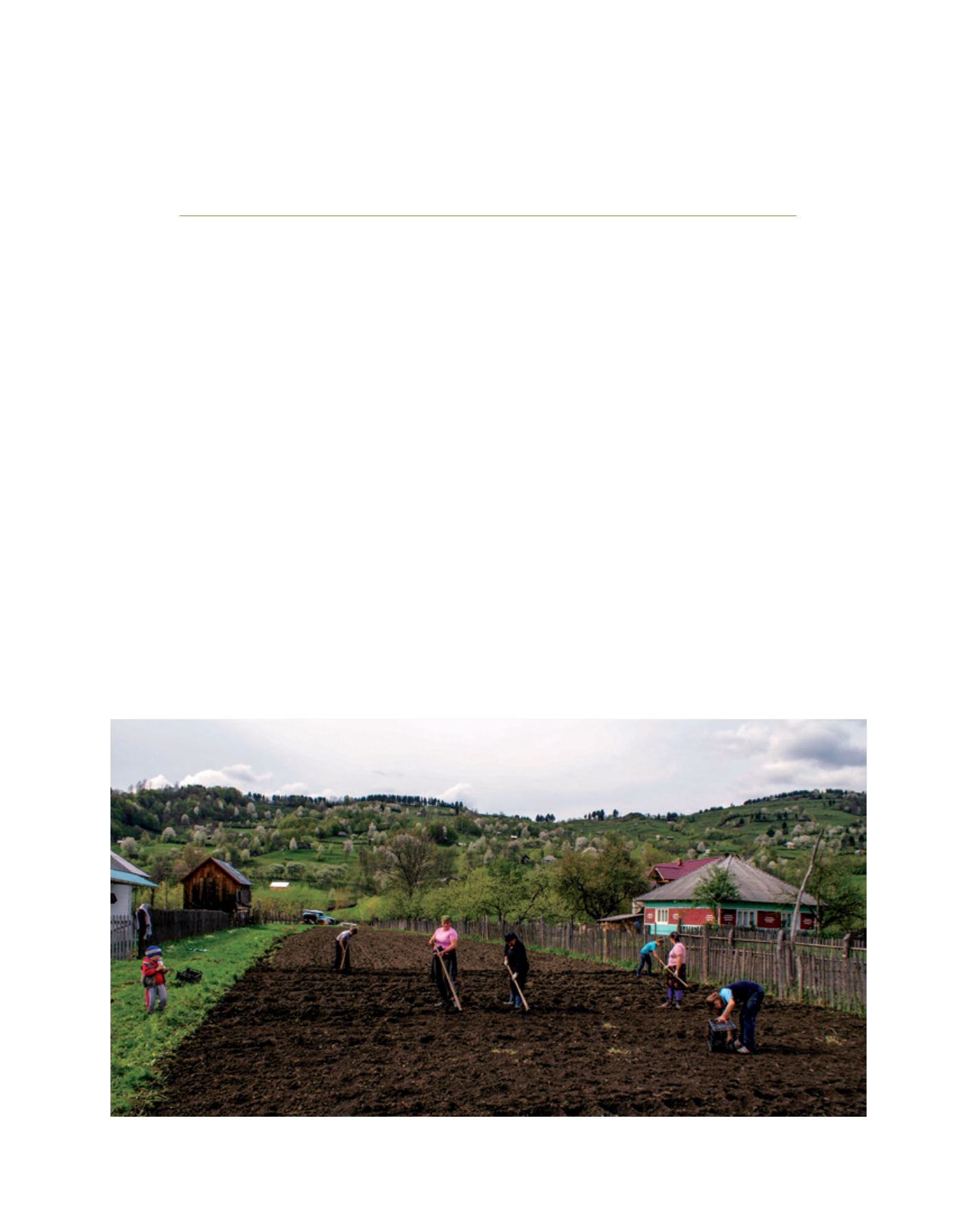

[
] 153
Supporting family farms for food
security and sustainable development
Daniel Constantin, Deputy Prime Minister and Minister of Agriculture and Rural Development, Romania
S
mall-scale agriculture has an essential role to play in
reaching food security and sustainable development
for humankind. However, this resource is not valued
enough, and we need to find ways to change our develop-
ment paradigms in this direction.
As I grew up I spent most of my vacations in the countryside
with my grandparents. They had a small piece of land and
they valued their farm very much. That’s where I learned most
about the strong connection the peasants have with their land
and their cultural heritage.
Romania has a long tradition in family farming; it was the
pillar on which Romanian society developed. Family farm
activities are not limited to agriculture. They also comprise
important social activities for the community and family,
preserve traditions and crafts, attract rural tourism and
agrotourism, and help to protect the environment through
extensive agricultural practices.
After the First WorldWar, Romania became one of the largest
producing countries of agricultural commodities in Europe,
exporting mostly maize, wheat and other grains. The reforms
made by the Government at the time helped families secure
a living, by giving them land and know-how in the field. The
connection between people and their land was embedded in
Romania’s rural society and it is still present in today’s villages.
The Second World War destroyed all the agricultural infra-
structure and communism took over rural life. Large state
farms were built and the land was taken away from the people.
Most farmers were moved to the cities and were employed in
newly developing industry. Those left in the villages worked
at low productivity levels for the state farms. The farming
know-how gathered over centuries, along with traditions and
crafts, were lost. The new industrialized agriculture system
took over and family farmers were replaced with simply
employees. The only land people kept was that around their
houses, where they kept growing some crops for the family.
After 1989, many moved back to the villages due to the
closing of the industry plants. They and those who still lived
there became farmers in order to survive. Their methods
were poor and their means were very low. The bad memory
Image: Ministry of Agriculture and Rural Development of Romania
In Romania, agriculture employs most rural inhabitants and most farms are under five hectares
D
eep
R
oots
















